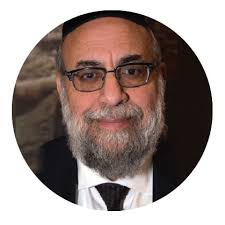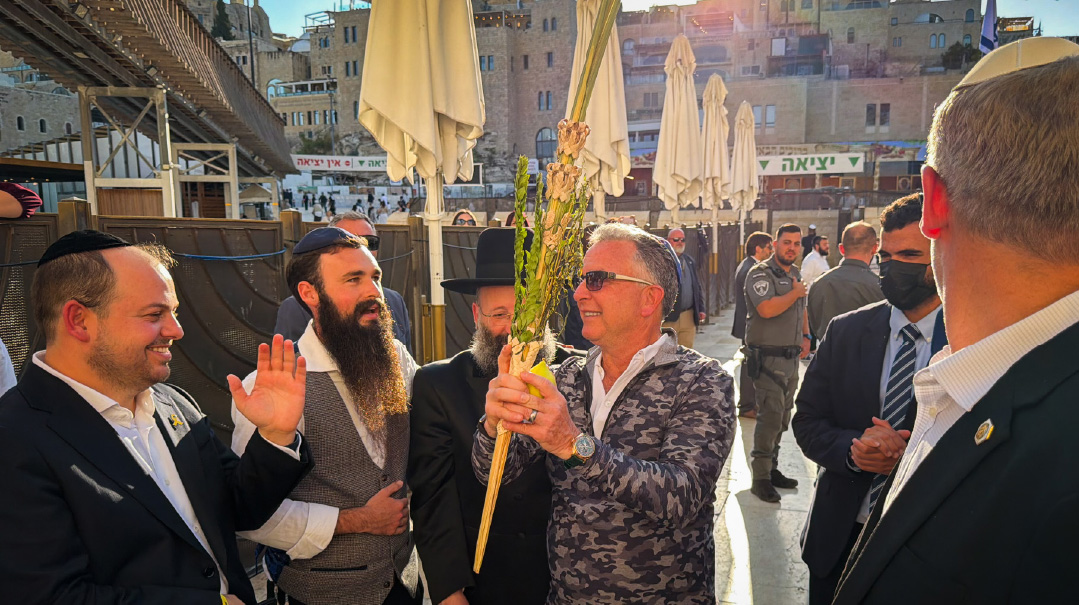A Sign upon Our Hearts

The message I received personally through my lost tefillin
Pesach has an unusual feature, unique among the Shalosh Regalim, in that its last days are referred to as Acharon shel Pesach. We don’t refer to the last days of Succos or Shavuos this way; what is so special about the final days of Pesach that they receive this special title?
And this was not something created by Pesach hotel operators so they could charge for an additional day of Yom Tov. There’s actually a mishnah in Maseches Maaser Sheni that refers to Acharon shel Pesach as the deadline for giving maaser (to avoid violating the laws of bal tei’acher).
So what is the significance of Acharon shel Pesach? Perhaps we can suggest an explanation.
I will relate an incident that happened during our brief six-day trip to Eretz Yisrael in December 2020.
Ten months after our last visit to the Kosel and eight months after coming home from a near-death Covid experience, we were finally able to go daven Shacharis at the Kosel on a Thursday morning. My wife’s new phone couldn’t access the Gett app to order a cab, so we planned to flag one down at the nearest busy intersection.
The moment we stepped out of our building, a cab was passing by. It was a bit too compact for my liking, but we were a ten-minute ride from the Kosel, so we got in. I remember thinking how mazeldig it was to find a cab the very minute we exited the building, and I hoped it was an omen for a mazeldig day.
That would prove to be prophetic.
As the cab began to move, I couldn’t get comfortable in the cramped front seat, so I handed my tallis and tefillin bag to my wife in the back seat. Holding a cup of hot coffee and her phone while talking to our children back in New York, she managed to place the bag on the seat beside her.
With the streets nearly empty of tourists, we quickly reached the walls of the Old City. As we made the steep descent alongside Yeshivat Porat Yosef, we had to stop behind an oversized bus that was having difficulty negotiating a turn. Although we were still short of the pick-up and drop-off area for the Kosel, the cab driver barked at us to exit, to save him a few extra minutes. We quickly got out, my wife elegantly cradling her coffee and cell phone. And the cab sped off.
And yes, he sped away with my tallis and tefillin sitting in the back seat.
My wife — who is blameless in this, as she does not carry a tallis bag as a matter of routine — immediately realized what happened and screamed out to the driver to stop. But he didn’t hear her and continued through Shaar Ashpah. My wife tried to pursue him, calling to the bystanders to stop him, but he was out of sight.
I was devastated. My tefillin, a loyal morning partner for close to 50 years, were now lost, maybe forever.
We needed to do something, but since we had hailed a random cab rather than calling a dispatcher, we had no way to track down our driver.
A minute later, another cab pulled up, and an American yungerman stepped out. He noticed my distress and asked if he could be of assistance. I told him what happened, and he immediately took out his phone and called all the major cab companies, one by one, asking if they had a driver who had just made a drop-off at the Kosel. No luck.
(If that yungerman happens to read this article, I ask him to please reach out to me, as I never had the opportunity to thank him personally for his generous efforts on my behalf.)
My wife, meanwhile, called our eldest daughter, Shoshana Goldsmith, who lives with her family in Ramat Eshkol, for advice. Her first response, after hearing our predicament, was, “That is exactly why we never take random cabs in Israel.”
As I paced back and forth, beside myself, I heard my wife instruct Shoshana to please say the Rav Meir Baal Haneis tefillah for lost items and pledge money to tzedakah. Not long after they hung up, Shoshana, who shares her mother’s creativity in the midst of crisis, called back. She advised us to go immediately to the security checkpoint at the bus stop. She explained that in Israel, there are cameras at all the checkpoints. We should tell the officers what happened and ask them to review the video to see if they could identify our cab.
We immediately went to the checkpoint and explained our situation to a young policewoman. Although she had just signed out after an eight-hour shift, and showed no outward signs of being religious, she immediately offered to help. She called her supervisor, who ordered a review of the video.
Less than five minutes later, the policewoman told us they had just contacted the cab driver. He had found the tallis and tefillin bag in his back seat and was on his way back to the Kosel. We were elated, and so grateful to the policewoman, but despite our pleading, she refused to accept any payment as appreciation for her efforts. She insisted she was just doing her job. Yes, the job of being a bas Yisrael with a compassionate heart.
Ten minutes later, I was holding my beloved tefillin in my hands. A short while earlier, I had nearly given up hope of seeing them again.
As I stood near the nearly empty Kosel, wrapped in my tallis and tefillin, waiting for a minyan to gather, I began to ponder: Why did this just happen? Why did I have to go through this short-lived trauma of losing and then retrieving my tefillin?
We can never really know HaKadosh Baruch Hu’s reasons for doing things. Chazal repeatedly advise us to be mefashfesh b’maasav, make an introspection of our actions. So I did.
Until I became seriously ill with COVID-19, I had never missed one day of putting on my tefillin. Then came several weeks when I was unable to. Whether I was in a medically induced coma, or recuperating in a step-down unit and needing the help of a kind frum doctor, often I just wasn’t strong or lucid enough to put on tefillin myself. When I was home and finally coming back to myself, I remember the first time my wife brought me my tefillin to enable me to perform this incredible mitzvah.
The simple message in the mitzvah of tefillin is elevation. Chazal teach us a halachah that tefillin are like shoes. We put on tefillin the same way we put on our shoes — right foot first, then the left; then we tie the left shoe, as we do the tefillin of the yad on the left arm.
The comparison between shoes and tefillin seems incomprehensible; tefillin are the most elevated thing we put on, and shoes are the lowest. An adam gadol once explained that even shoes can be elevated to the level of tefillin, if used for a devar mitzvah. And tefillin, if used with disrespect, can be chas v’shalom lowered to the level of shoes.
When I took my beloved tefillin in my hands for the first time in a long while, I silently pledged that from then on, each morning before I made the brachah, I would stop for a full minute and contemplate how fortunate I was to be able to fulfill this mitzvah when for so long I could not. Only after that moment of reflection would I make the brachah.
I kept this commitment every morning for months. Then I resumed my regular schedule, decades old, of giving a daf yomi shiur before the early Shacharis minyan. Unfortunately, this schedule always involves a rush — finish the daf so we can start the minyan on time, so that those who need to commute to the city after davening can catch the LIRR.
One day I had to rush to put my tefillin on right after the daf, so I just didn’t have the extra few moments to reflect before making the brachah. One day became two, and then three, and then I forgot about my promise to myself.
Now, as I sat by the Kosel with such appreciation that my tallis and tefillin had been returned to me after I thought they were lost forever, I realized why all this happened. I had lost my appreciation for the mitzvah, and Hashem wanted to remind me of that. All this had to happen so that when I put on my newly found tefillin, that feeling of appreciation would once again completely overwhelm me. I got the message. I recommitted to taking a moment of reflection and appreciation for this great mitzvah, and this time I hope to never to lose it. Neither my tefillin, nor my resolve.
This helped me answer the question we started out with. More than any other, Pesach is the Yom Tov that imbues us with a message we must keep in our hearts the entire year. We say in the Haggadah, “b’chol dor v’dor, chayav adam liros es atzmo k’ilu hu yatza miMitzrayim” — we are obligated to feel as if we ourselves had gone out of Mitzrayim. We need to refresh this awareness in our minds every single day of the year. That is why twice a day in Krias Shema we repeat the story of geulas Mitzrayim.
This can’t become rote or stale; we need to experience it anew every single day of our lives. And therefore, Chazal added a special title to the last day of Pesach — it’s not just another day of Yom Tov, it’s “acharon,” the last opportunity that we have to internalize this message so we can carry it with us the rest of the year. (This writer leaves it to the creative reader to make the connection with the laws of maaser.)
Rav Shlomo Wolbe said in his hesped for his rebbi, the famed mashgiach, Rav Chatzkel Levenstein ztz”l, “With his passing, we have lost the last of the yotzei Mitzrayim.” (See Haggadah shel Pesach Mekarvan LaTorah.)
What Rav Wolbe meant was that the Mashgiach ztz”l was able to actually envision himself standing on the banks of the Yam Suf as it was being split. That’s how real it was to him.
This is the message for Klal Yisrael as we enter into the majestic Yom Tov of Pesach, from the first day until the final call of Acharon shel Pesach — the message I received personally through my lost tefillin. This year, may we all experience Yetzias Mitzrayim and never, ever forget the experience, carrying it within us forever and ever.
(This article was written as a zechus for Sara Chaya z”l bas Rav Chaim Aryeh Zev)
Originally featured in Mishpacha, Issue 854.
Oops! We could not locate your form.













